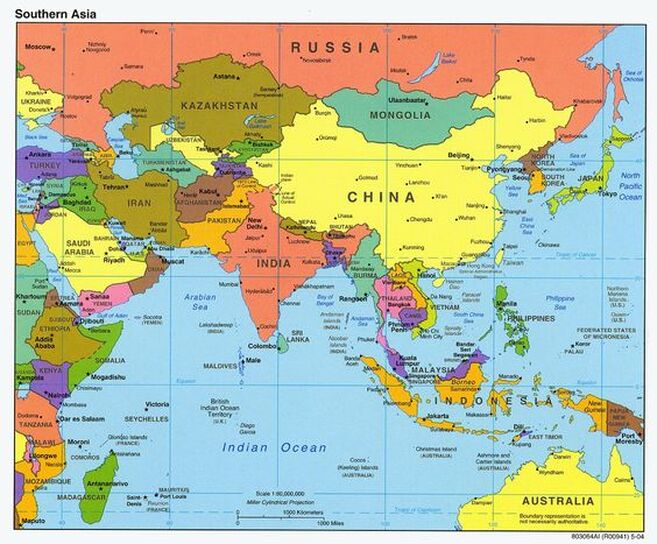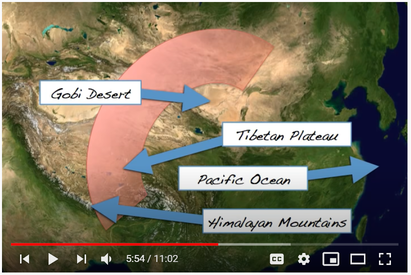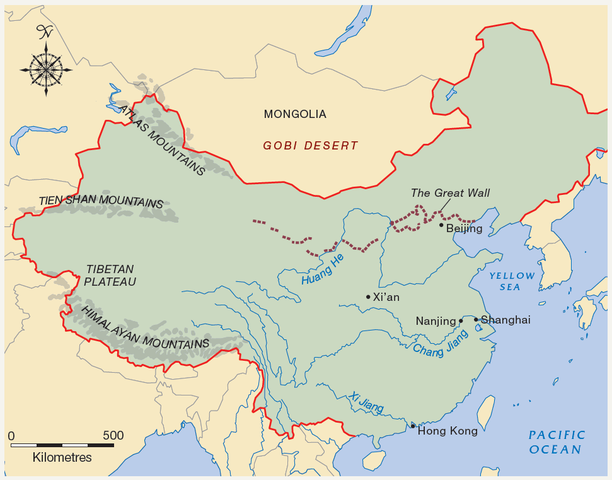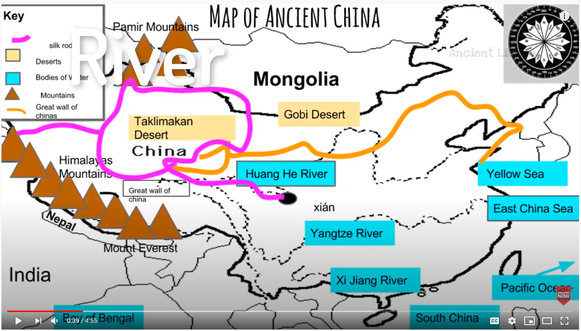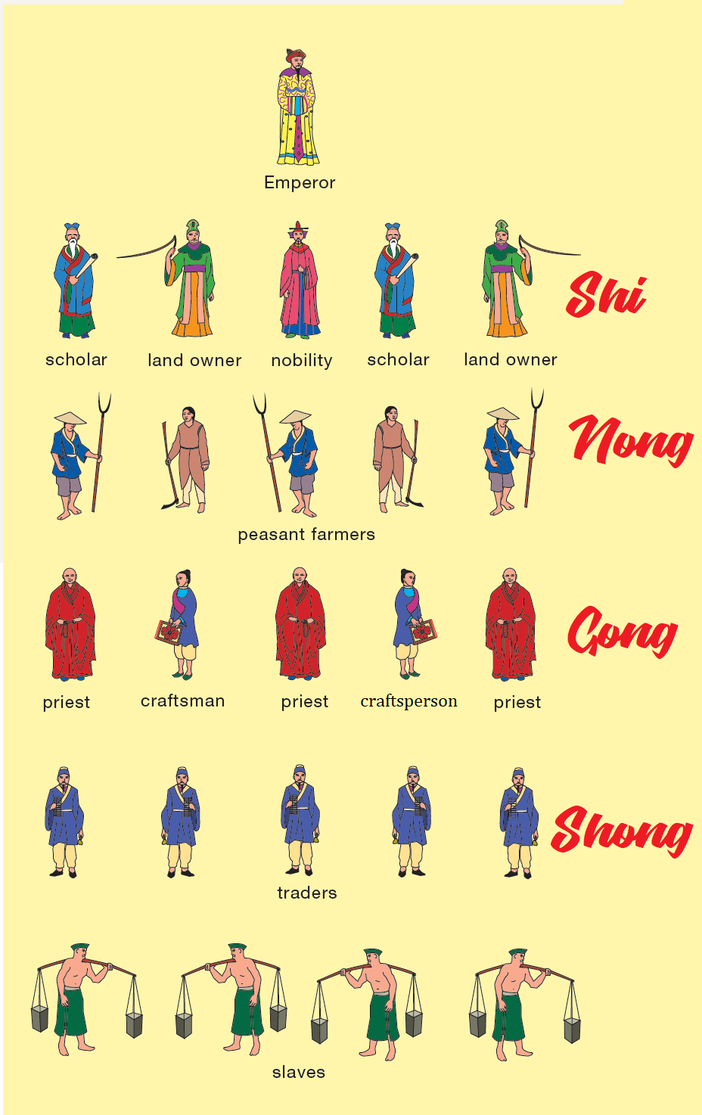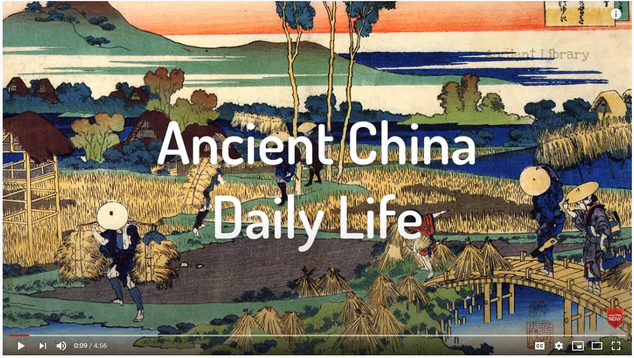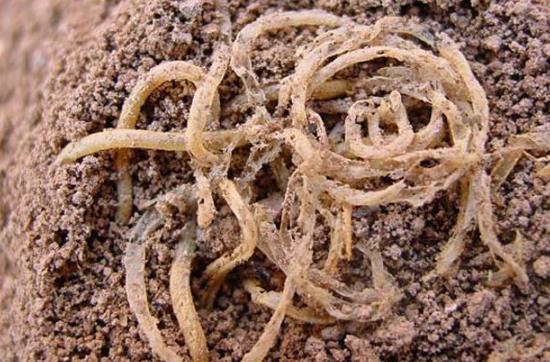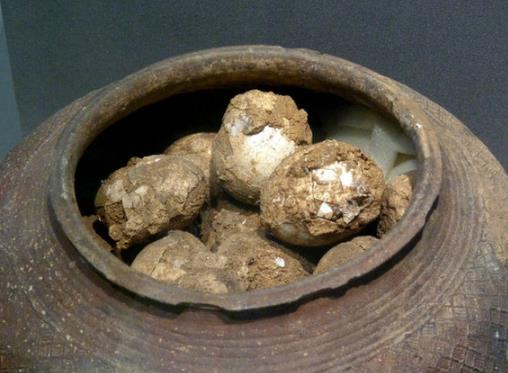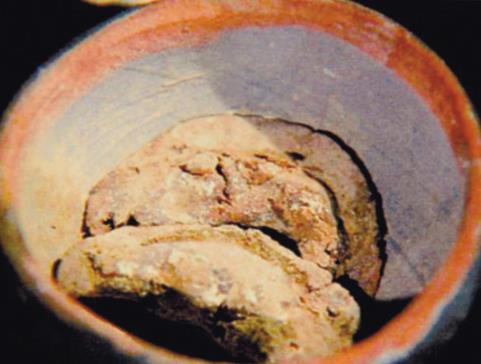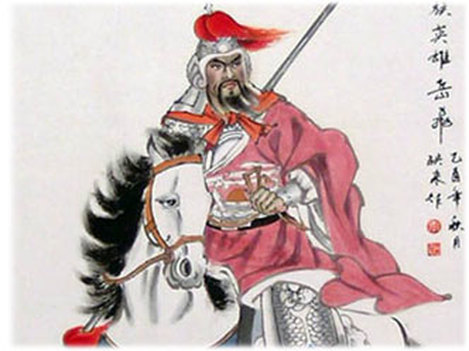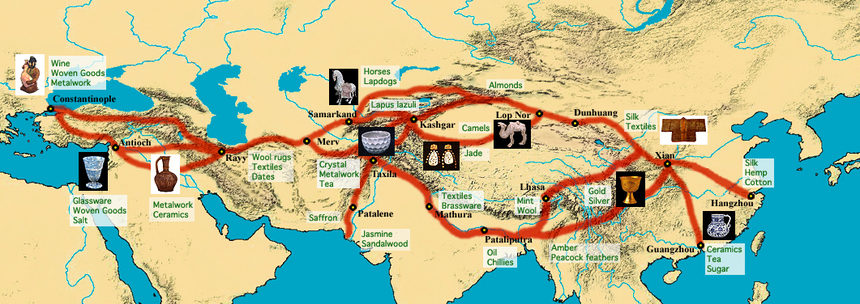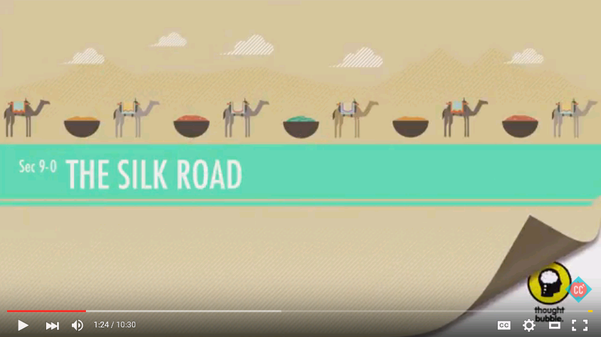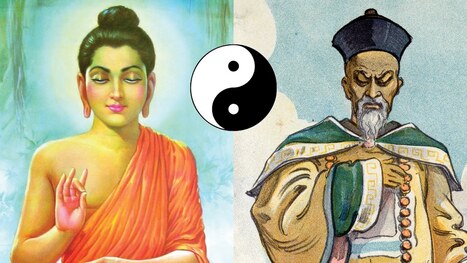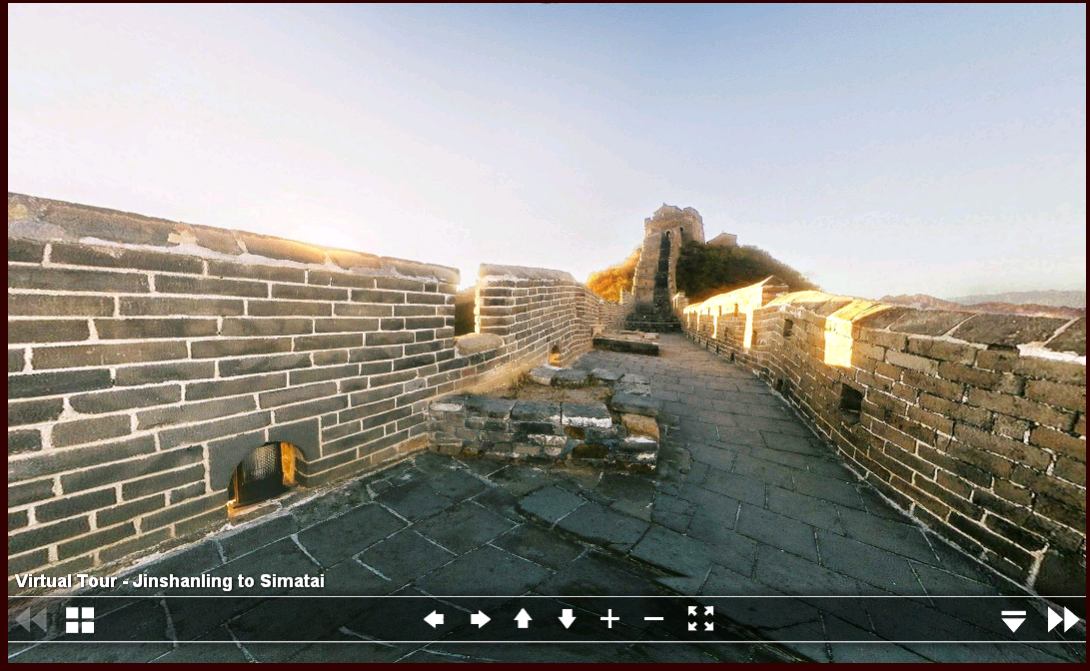Introduction to Ancient China
Watch: Crash Course - 2,000 Years of Chinese History!
Watch: Crash Course - 2,000 Years of Chinese History!
Where in the World is China?
Watch: Geography of China
To understand Chinese civilisation it is important to look at the map. The land where people live plays a very important part in the way a civilisation develops. China is unique because of its landscape. It is a vast land, the third largest country in the world, with an area of over 9.5 million square kilometres. To the west and south-west is the high Tibetan plateau and the Himalayan mountains, the highest mountains in the world. To the north-west is the vast expanse of the Gobi Desert and the lands of Mongolia, while along China’s eastern border there are over 12 000 kilometres of sea. These all served as natural barriers and helped protect the ancient people from invasion. This landscape also served the purpose of keeping China isolated from the rest of the world for many thousands of years.
There are also many great rivers in China. The most important are the Huang He (the Yellow River) in the north, over 5000 kilometres long, and the Chang Jiang (the Yangtze River) in the south, the longest river in China and over 6000 kilometres in length.
Seas to the East
The China Sea and the Yellow Sea, both located in the Pacific Ocean. These seas provide a huge coastline, which provided trade routes and easy access to food.
Deserts to the North-west
The Gobi Desert is one of the driest deserts in the world. In the Gobi, there is at least the hope of water, although an oasis is rare. The Taklamakan Desert, China's other desert, is nicknamed the Sea of Death. It offers poisonous snakes, frequent sand storms, boiling days, freezing nights, and intense water shortages. The Sea of Death is not a small desert. In fact, it is the second largest desert in the world.
Mountains to the West and South-west
One of the most impressive barriers was the Himalayan Mountains. The Himalayan Mountains are not located in modern day China. They run along the border to the south. In ancient times, these mountains helped to protect the early Chinese people from invasion.
The Himalayan Mountains to the south are very rugged. Mount Everest is the highest mountain in the world! But Mount Everest is not the only high peak in the Himalayan Mountains. The Himalayas include ten (10!) of the highest peaks in the world. Additionally the Tibetan Plateau was another geographical feature that acted as a natural barrier.
There are also many great rivers in China. The most important are the Huang He (the Yellow River) in the north, over 5000 kilometres long, and the Chang Jiang (the Yangtze River) in the south, the longest river in China and over 6000 kilometres in length.
Seas to the East
The China Sea and the Yellow Sea, both located in the Pacific Ocean. These seas provide a huge coastline, which provided trade routes and easy access to food.
Deserts to the North-west
The Gobi Desert is one of the driest deserts in the world. In the Gobi, there is at least the hope of water, although an oasis is rare. The Taklamakan Desert, China's other desert, is nicknamed the Sea of Death. It offers poisonous snakes, frequent sand storms, boiling days, freezing nights, and intense water shortages. The Sea of Death is not a small desert. In fact, it is the second largest desert in the world.
Mountains to the West and South-west
One of the most impressive barriers was the Himalayan Mountains. The Himalayan Mountains are not located in modern day China. They run along the border to the south. In ancient times, these mountains helped to protect the early Chinese people from invasion.
The Himalayan Mountains to the south are very rugged. Mount Everest is the highest mountain in the world! But Mount Everest is not the only high peak in the Himalayan Mountains. The Himalayas include ten (10!) of the highest peaks in the world. Additionally the Tibetan Plateau was another geographical feature that acted as a natural barrier.
Watch: Ancient China Geography
Timeline of Ancient China
Ancient China Workbook
| ancient_china__workbook.pdf | |
| File Size: | 60221 kb |
| File Type: | |
Social Structure
Watch: Daily Life in Ancient China
A STABLE FOOD SUPPLY
A very important part of a civilisation is having a stable food supply. This means that there is enough food for all of the people all the time. To do this people had to settle down in one area and start farming. The best farming comes from good soil and drinking water.
When the mountains snow melted it would go into the rivers. China has two major river systems - the Yellow River (Huang He) and the Yangtze River (Chang Jiang). The Yangtze is the third longest river in the world. It is about 4000 miles long. It floods each year and leaves fertile soil along the banks. The Yangtze River has high banks, which keeps homes safe from the annual flooding. The Yangzi River irrigates the rice growing regions in the south of China.
The Huang He (Yellow River) is about 3000 miles long. It also floods each year. The banks along the Huang He River are low. Civilization in ancient China began settling along the Yellow River about 5000 years ago. These early people called all rivers in China by the nickname "The Great Sorrow". That is because each year during the flood season, all homes along the Huang He River were destroyed. Each year, the ancient Chinese had to rebuild their homes and their lives. Over time, people learned the techniques of flood control. The rich began to build their homes high above the river.
FARMING
The rice field would be flooded and each plant would be planed by hand in the soft soil of the planted field. Due to lack of animal manure, farmers often used human waste to fertilise their fields. Their fertilising allowed them to used the fields year after year, without the need to allow it to land to rest. This type of rice farming flourished in China. As a result the population of china also flourished. From 750 to 1100 CE the population in China doubled to 100 million.
The most common foods grown and consumed in ancient China were: rice, millet, wheat, noodles, tofu, tea, Sorghum, wine (made from rice and millet), vegetables (cucumber, soybeans).
Watch: Farming in Ancient China
A very important part of a civilisation is having a stable food supply. This means that there is enough food for all of the people all the time. To do this people had to settle down in one area and start farming. The best farming comes from good soil and drinking water.
When the mountains snow melted it would go into the rivers. China has two major river systems - the Yellow River (Huang He) and the Yangtze River (Chang Jiang). The Yangtze is the third longest river in the world. It is about 4000 miles long. It floods each year and leaves fertile soil along the banks. The Yangtze River has high banks, which keeps homes safe from the annual flooding. The Yangzi River irrigates the rice growing regions in the south of China.
The Huang He (Yellow River) is about 3000 miles long. It also floods each year. The banks along the Huang He River are low. Civilization in ancient China began settling along the Yellow River about 5000 years ago. These early people called all rivers in China by the nickname "The Great Sorrow". That is because each year during the flood season, all homes along the Huang He River were destroyed. Each year, the ancient Chinese had to rebuild their homes and their lives. Over time, people learned the techniques of flood control. The rich began to build their homes high above the river.
FARMING
The rice field would be flooded and each plant would be planed by hand in the soft soil of the planted field. Due to lack of animal manure, farmers often used human waste to fertilise their fields. Their fertilising allowed them to used the fields year after year, without the need to allow it to land to rest. This type of rice farming flourished in China. As a result the population of china also flourished. From 750 to 1100 CE the population in China doubled to 100 million.
The most common foods grown and consumed in ancient China were: rice, millet, wheat, noodles, tofu, tea, Sorghum, wine (made from rice and millet), vegetables (cucumber, soybeans).
Watch: Farming in Ancient China
These noodles were discovered by archeologists at Lajia historical site in Minhe county of Northwest China's Qinghai province in 2002. Through research, archeologists concluded that the ingredients in the noodles were a mixture of millets ("shu" in Chinese) and they can be traced back 4,000 years, making them the earliest known noodles
This terrine with eggs inside was unearthed in an ancient tomb from the Western Zhou Dynasty (1046-771BC), with a history of more than 2,800 years. The eggs are the earliest ever discovered in China and are petrified.
The earliest Chinese dumplings were unearthed at Astana Cemetery in Turpan prefecture in Northwest China's Xinjiang Uygur autonomous region. They have a history of more than 1,700 years.
Ancient China Social Hierarchy
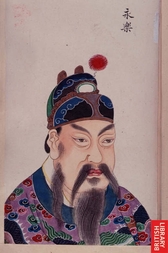
Yong Le - Third emperor of the Ming dynasty
People in ancient China wer organised into different social groups usually based on their jobs. People who contributed most to society were seena s the most honourable. This is why farmers, although quite poor, were still high lranked in the social structure.
Emperor - The Emperor often had absolute power over his subjects. He was greatly respected and was seen as the son of heaven.
Government Official and Warriors - Government Officials were scholars who helped the emperor rule his kingdom. They worked on paperwork and were respected for their learning and because they could read and write. Warriors were from the ruling class. They were respected for their leardership abilities and military skills.
Farmers and Peasants - Although farmer and peasants were often poor, they were respected for being landowners. They were often seen as the backbone of Chinese civilisation. It was believed that they made China strong.
Craftspeople - Craftspeople made beautiful and necessary objects. Althought they made useful things, they were not respected because they did not own land. Their skill, however, kept them from being the lowest group in China.
Merchants and Traders - Merchants and traders were often quite wealthy, but they were usually seen as untrustworthy. Because they did not make their own goods or own their own land they were the least respectd group in society.
Emperor - The Emperor often had absolute power over his subjects. He was greatly respected and was seen as the son of heaven.
Government Official and Warriors - Government Officials were scholars who helped the emperor rule his kingdom. They worked on paperwork and were respected for their learning and because they could read and write. Warriors were from the ruling class. They were respected for their leardership abilities and military skills.
Farmers and Peasants - Although farmer and peasants were often poor, they were respected for being landowners. They were often seen as the backbone of Chinese civilisation. It was believed that they made China strong.
Craftspeople - Craftspeople made beautiful and necessary objects. Althought they made useful things, they were not respected because they did not own land. Their skill, however, kept them from being the lowest group in China.
Merchants and Traders - Merchants and traders were often quite wealthy, but they were usually seen as untrustworthy. Because they did not make their own goods or own their own land they were the least respectd group in society.
The Silk Road
The Silk Road, or roads, was a network of overland trade routes that first were used around 200 BCE. The Silk Road linked China to Eastern Europe. From the ancient Chinese capital of Chang'an, now Xi'an, the Silk Road went through China's narrow Hexi corridor, before spreading south to India, present-day Afghanistan and Pakistan, or further west to Samarkand, Bukhara, Persia and the eastern Mediterranean.
For about a thousand years, caravans of camels loaded with rubies, jade, amber, musk and of course silk made their way along it.
For about a thousand years, caravans of camels loaded with rubies, jade, amber, musk and of course silk made their way along it.
Watch John Green's Crash Course in World History:
The Silk Road and Ancient Trade
The Experiences of Women in Ancient China
The majority of women in ancient China lived oppressed lives. Even women of the nobility and the imperial family did not escape the oppression, though life was possibly slightly easier for them than for the large population of poor women. Girls were were rarely educated and were considered to be the property of their fathers. As women they became the property of their husbands.
Family life
Women in ancient China were considered inferior to men. This meant that their whole lives were spent being subservient to the men in their families. Generations of one family often lived in the same house together and older people were greatly respected. A grandmother became important if she outlived her husband as she would then be the oldest member of the household and would be afforded the most respect. Confucius taught that women's roles were to look after the men in their families. He believed that it was not acceptable for a woman to have her own ambitions. He did, however, teach that a woman's role as mother and mother-in-law should be respected. He taught that a 'woman's greatest duty is to have a son'.
Marriage
Marriages were arranged in ancient China. The parents of the future pair consulted an astrologer who would determine if they were compatible by the time and date of their births. As a woman's thoughts and opinions were not considered important, the father's word was final on who his daughter would marry.
The morning after the marriage, the girl would bow and offer tea to her in-laws as a sign that she now belonged to her husband's family. Once married, a girl would live with her husband's family. She would be required to obey all the members of his family, particularly his mother. A girl often became the servant of her mother-in-law and was forbidden to disobey her. A girl gained more respect in her husband's family if she gave birth to a boy. The birth of a boy was always celebrated more than the birth of a girl. If families were very poor, they would sell their daughters as servants to rich families. If a wife did not give birth to a son, her husband often took other wives.
Foot binding
It is thought that foot binding began in around 900 AD and continued until 1911 when it was finally banned. There are various legends regarding the origins of foot binding. Some suggest that the practice became fashionable in the emperor's court as small feel were considered to be a mark of exceptional beauty. It is thought that the practice was initially taken up by wealthy families and it became a symbol that a family was wealthy, as girls with bound feet were barely able to walk, let alone work.
Girls with bound feet were considered very attractive and it became a common practice. It also became common for girls without bound feet to be rejected by suitors. The custom of foot binding gradually spread to all social classes as many poor people saw it as a way of improving their social status. It then became necessary for families to bind the feet of their daughters in order for them to find a husband. The practice of foot binding debilitated and weakened women. This meant they were less able to flee their families thus making them more obedient. The practice put great pressure on poor families who needed all members of their family to work. Some peasant families were so poor that the women continued to work in the fields with their bound feet. As they were unable to stand, they had to work on their hands and knees.
Foot binding began for most girls when they were around six or seven years of age, while the bones of the foot were still young and the arch had not yet fully developed. The process was excruciatingly painful. The toes were broken and bandages were tightly bound around the foot to pull the toes back and restrict their growth. The bandages were changed every few days and the process usually continued for another ten years until the feet had stopped growing and had become small and pointed.
Women's work
Women's work was centred on the home. Tasks such as preparing food, cleaning and looking after children were the norm for the majority of women in ancient China. They were expected to have many children and most women felt the pressure to bear a son. It was common for women to take up manual labour in the home. Spinning, weaving and sewing were common occupations. Some peasant women worked in the fields with their husbands.
Women's Secret language
Nushu was a secret language which is thought to have developed in the Jiangyong county of Hunan province in southern China. No one knows its exact age, but it is thought to have developed over hundreds of years. Some experts suggest that it began around 300 AD.
Nushu was a secret written language developed by women who were not allowed to be educated. It was different to the language that men learned and used and therefore could only be understood by the small community of women who communicated with it.
Knowledge of Nushu was passed down by grandmothers, mothers, aunts and great aunts and was never shared with men. For many women it was comforting to be able to secretly share their feelings with other women.
The Practice of Foot Binding
Terracotta Warriors of Xian
Watch: Chinese Religion
The Great Wall of China Virtual Tour
Why is there a Great Wall? The Great Wall was key to protecting agriculture and resisting cavalry of the Huns and other warrior tribes from the north. The advantages of the enormous barrier diminished with the advancement of gunpowder and other weaponry.
The wall was originally built of stone, wood, grass and earth. In the Ming Dynasty bricks were produced in kilns set up along the wall. The bricks were transported by men carrying them on their backs, donkeys, mules and even goats had a brick tied to their head before being driven up a mountain.
The Great Wall of China was built over more than two thousand years. Construction on the first section began between the 7th and 6th century BC, and the last work on the wall was done between the 14th and 17th centuries.
The wall was originally built of stone, wood, grass and earth. In the Ming Dynasty bricks were produced in kilns set up along the wall. The bricks were transported by men carrying them on their backs, donkeys, mules and even goats had a brick tied to their head before being driven up a mountain.
The Great Wall of China was built over more than two thousand years. Construction on the first section began between the 7th and 6th century BC, and the last work on the wall was done between the 14th and 17th centuries.


